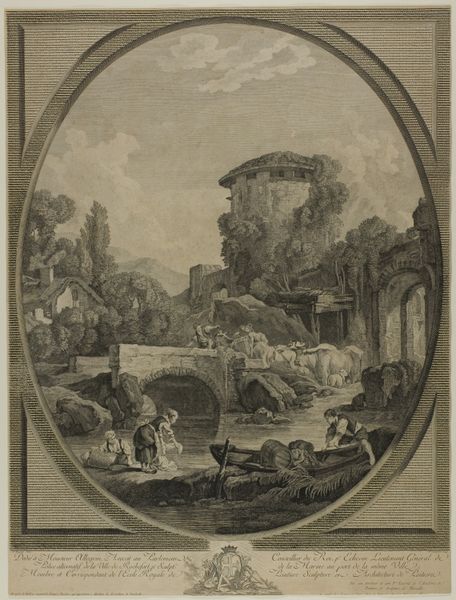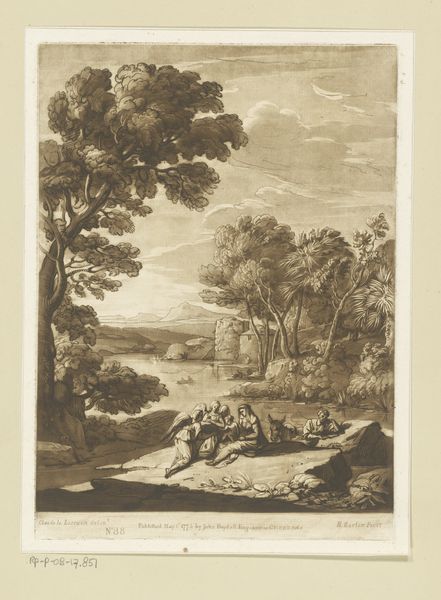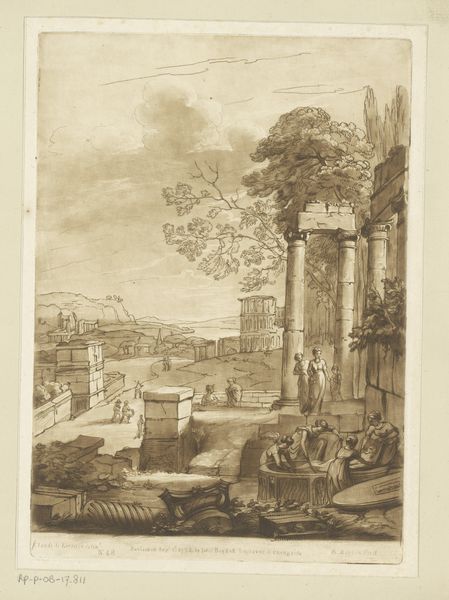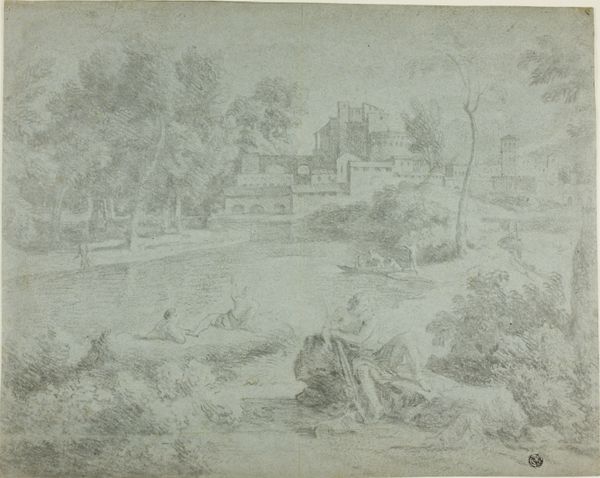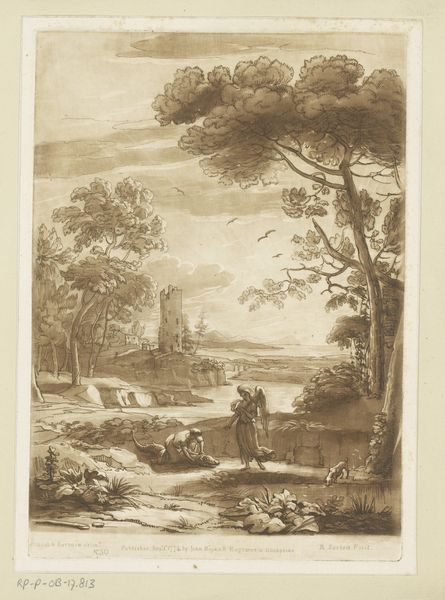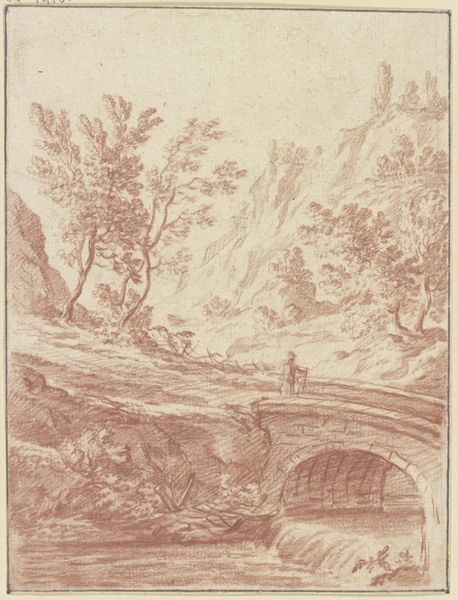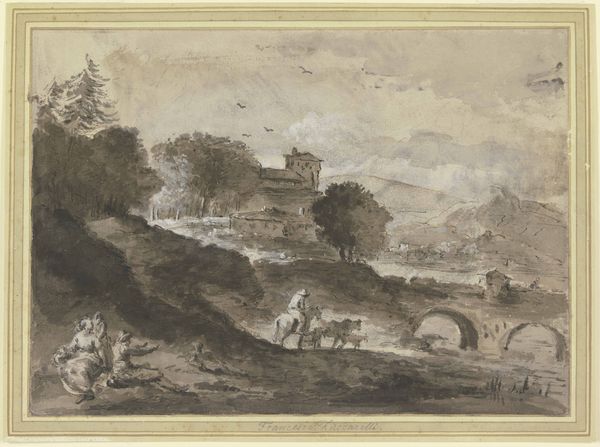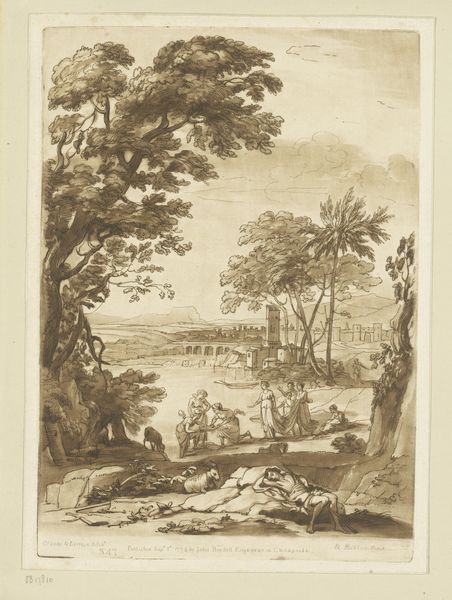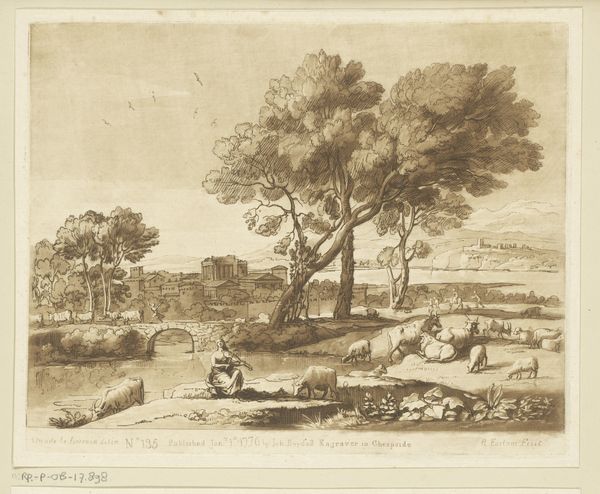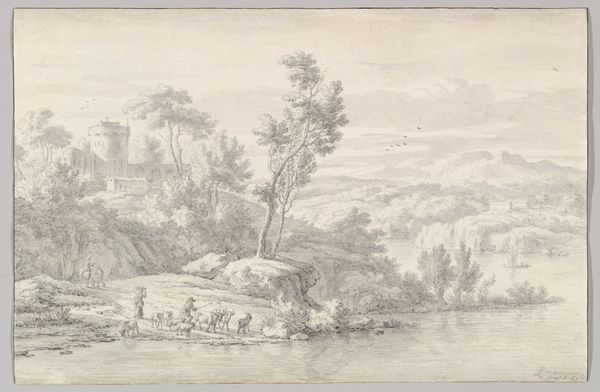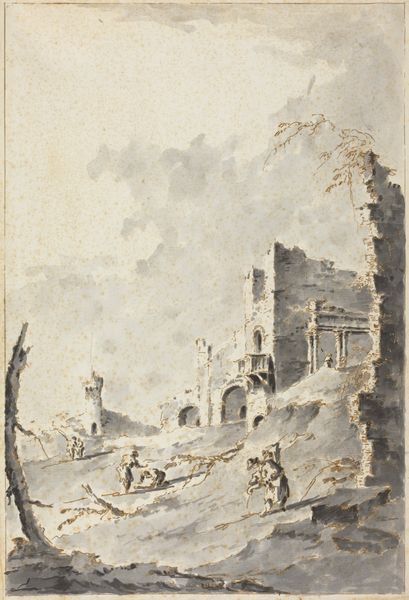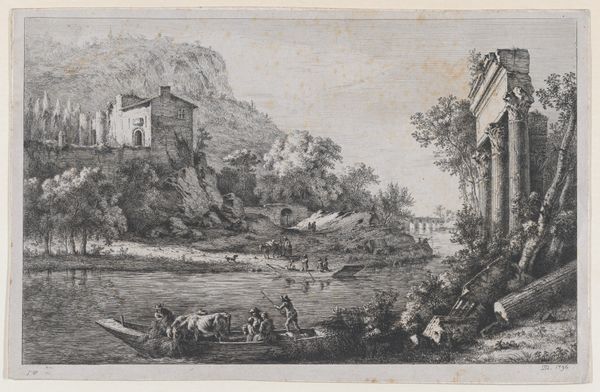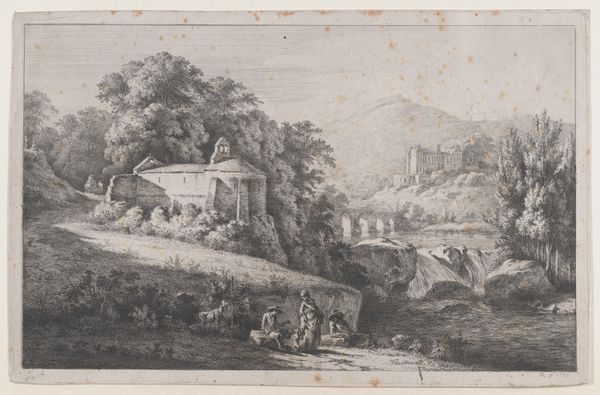
drawing, print, paper, ink, chalk, graphite
#
drawing
#
baroque
#
ink painting
# print
#
landscape
#
figuration
#
paper
#
oil painting
#
ink
#
chalk
#
graphite
Dimensions: 342 × 240 mm
Copyright: Public Domain
Curator: Giovanni Francesco Grimaldi, also known as Il Bolognese, created this drawing, "Figures Seated by a River," employing ink, graphite, and chalk on paper. It’s a baroque landscape drawing, and although undated, its style firmly places it within the 17th century. Editor: There’s a dreamlike quality to it. The sepia tones give it an aged feel, but the landscape itself seems almost timeless. It feels both intimate, with the figures in the foreground, and expansive, with the river winding back into the distance. Curator: The figures are central, aren't they? Notice their arrangement and the echoes of classical groupings within them. One grouping on the left feels almost maternal, while the figures on the right, arranged almost in profile, recall depictions of the Muses. Editor: It's fascinating how Grimaldi uses the landscape as a backdrop but imbues it with so much symbolic potential through these figures. It invites the question of who these people might be—and, importantly, *why* they're here by this river. Is this meant to evoke a sense of idyllic leisure, or is there a deeper narrative unfolding? Are the bodies coded with some historical, mythical, or religious import? Curator: Considering the historical context, the river itself acts as a powerful symbol, representing transition, passage, the flow of time… think of it within the historical framework. Waterways were lifelines and borders. Here, though, the mood feels more contemplative, and there is very little, if anything, coded by contemporary aesthetic approaches. Editor: Yet it’s the very timelessness you mention that makes it interesting! It asks to be mapped against our present-day understanding. Perhaps the arrangement evokes a longing for connection, something increasingly precious today, for example. Or, thinking about landscape itself— who had access, historically and geographically? I am most concerned with which stories or memories these conventional bucolic scapes actively conceal. Curator: I see that! Grimaldi provides us with a snapshot of an imagined classical idyll that, although removed, carries a visual echo, if only faint, across the centuries. I leave seeing it a bit differently now, and more aware of how these landscapes served the wealthy during this period, as the ideal refuge from which to view the world. Editor: Precisely! And recognizing that silence, we can consider what active work it takes to dismantle these dominant narratives.
Comments
No comments
Be the first to comment and join the conversation on the ultimate creative platform.
